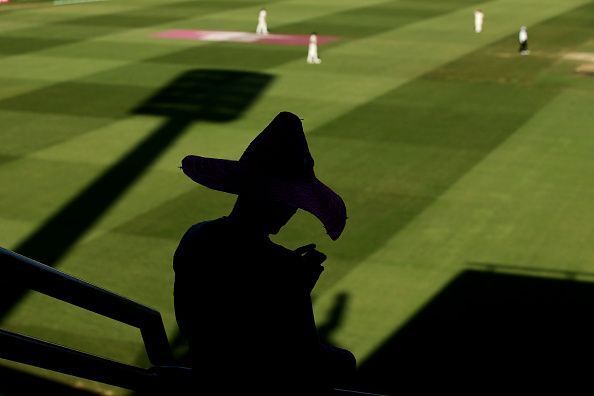
A comparison of cricketer workload: 1970s vis-à-vis today

The recent call by the International Cricket Council (ICC) that it is planning to consider four-day Tests has received mixed responses. On one hand there are the purists who don’t want the traditional format to be tinkered with and on the other are those who are open to the change. One of the reasoning given is that Test cricket is not commercially viable for the broadcasters and this initiative might make it more attractive as well as free up the cricket calendar for more T20s, T10s and what not.
There’s also a school of thought which says that the entire cricketing calendar needs to re-looked as the players are over-worked with matches taking place every other day. Prima-facie the argument of more matches being played these days looks acceptable. But taking a deeper statistics backed analysis gives a different perspective.
Also see - India Australia schedule
While the number of formats have increased, but has it actually added to the number of playing days? Let’s take a look at the number of scheduled playing days for the players of the Indian Cricket Team in few busy seasons in the 1970s and compare it with that in the last few years.
1971
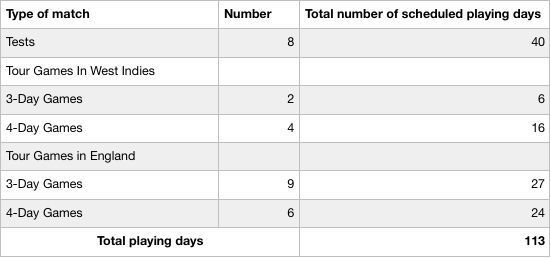
Domestic matches in India like the Ranji and Duleep Trophy have not been considered in 1971 as most of the Indian stars were away playing Tests at the time of these tournaments.
1974
The number of matches for Ranji and Duleep Trophy have been counted for top teams like Karnataka & Bombay (in case of Ranji Trophy) and West Zone (in case of Duleep Trophy). This year had the top stars playing the domestic tournaments.
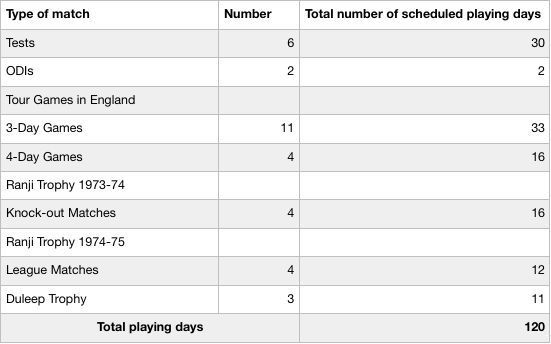
Note that for both these years, we have not considered the Board President’s XI games against touring sides, the university matches or the leagues in different cities (like the Kanga league in Mumbai) which back then attracted star India players. Few Indian players also played county cricket. Inclusion of all this will make the total number of playing days even more than noted above.
2017
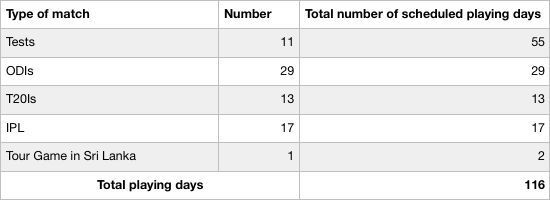
For analysis from 2017 onwards, none of the Indian domestic matches have been taken into consideration as the top stars have rarely played these matches. For IPL matches, the count is with the assumption that the team plays the maximum number of matches i.e. 14 league games and 3 knock-outs.
2018
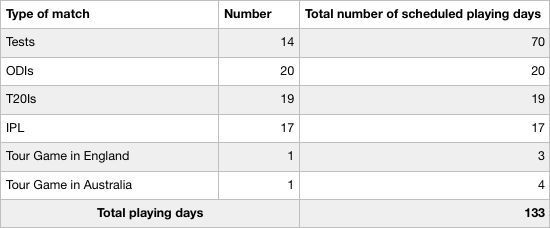
2019
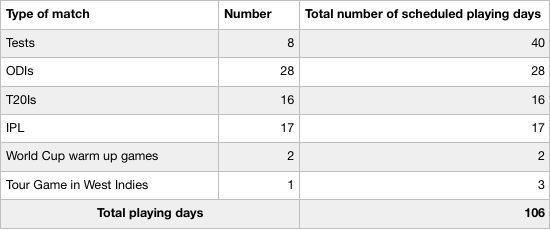
As can be seen from this analysis, the number of playing days are more or less comparable for the years in consideration. 2018 was an unusually busy year which saw 133 possible playing days and it is 13 more than that in 1974.
Now, just like the coin which is flipped during the toss, there are two sides to the hypothesis. One may argue that the fitness level required in today’s cricket has gone to a totally different level and one can't deny that. But then, the stamina required to bowl 20 overs in a day (in case of Tests and 3-4 day games) cannot be compared with T20s which have 40 overs being bowled in the entire game. Also, the lodging and travelling comforts is in favour of the players of today’s era.
Don’t take workload as an excuse for everything
I am not for a moment suggesting that today’s players are not playing enough matches or have long off-periods. They do work really hard and it does not require anyone's approval stamp. My only humble suggestion is that even cricketers of yesteryears played approximately the same number of days as todays players do. And thus for anything that goes wrong with them, be it injury or shortening of cricket calendar, the workload of cricketers shouldn’t be taken as an excuse.
Also read: The art of playing Test cricket needs to be rediscovered